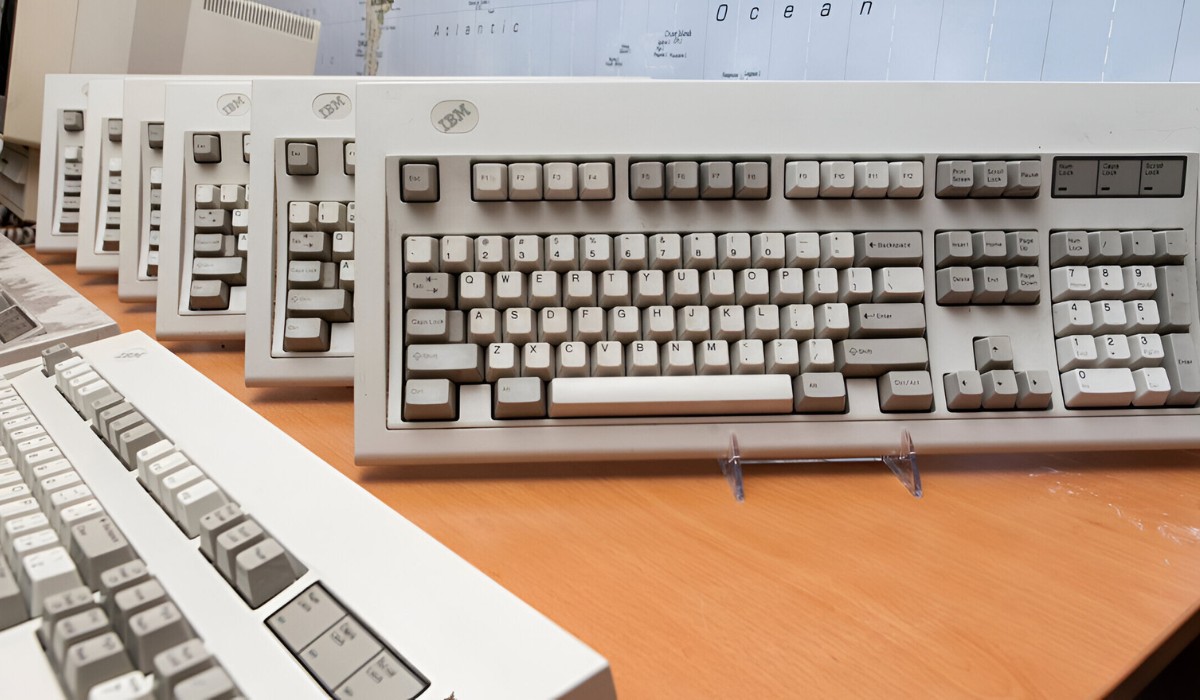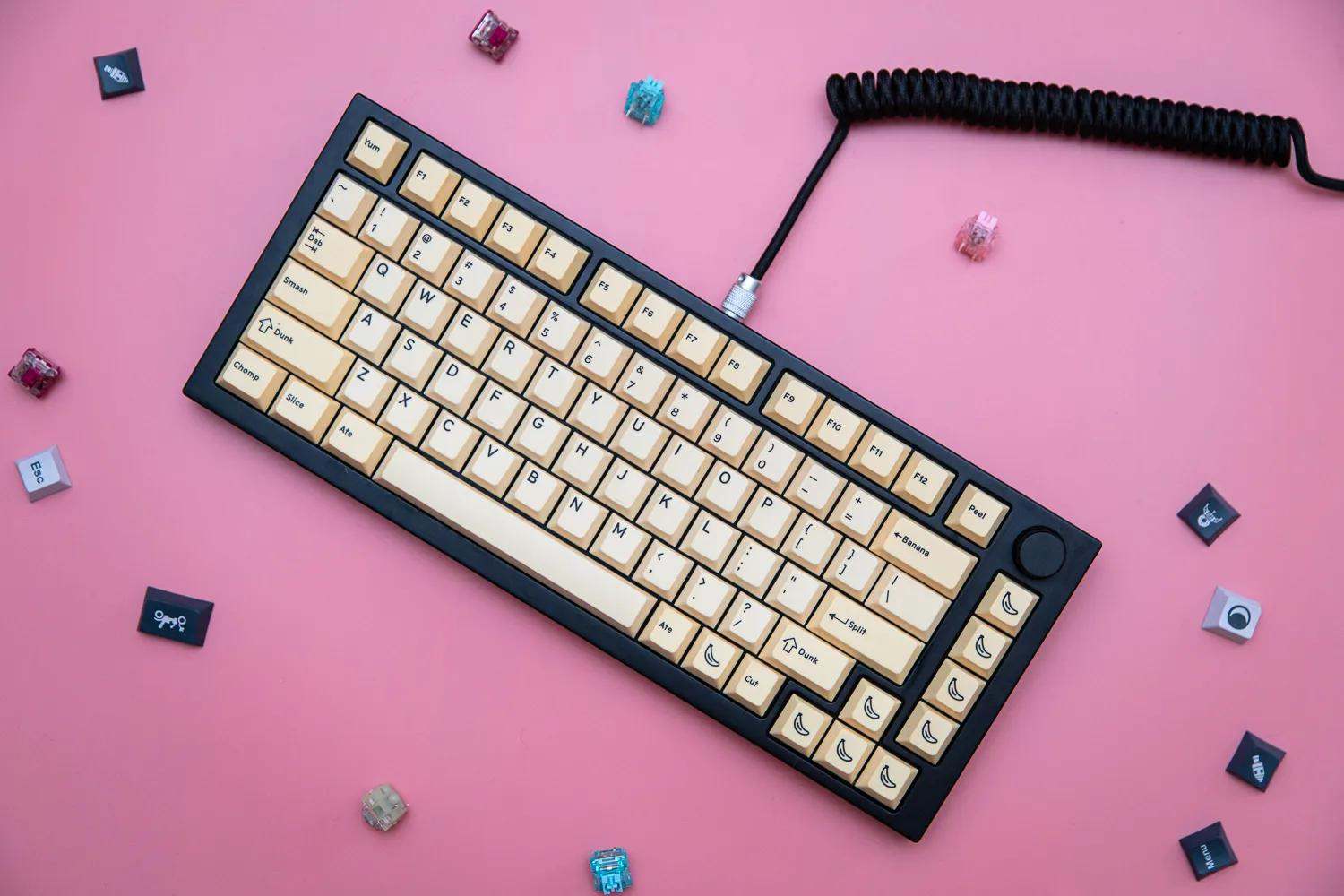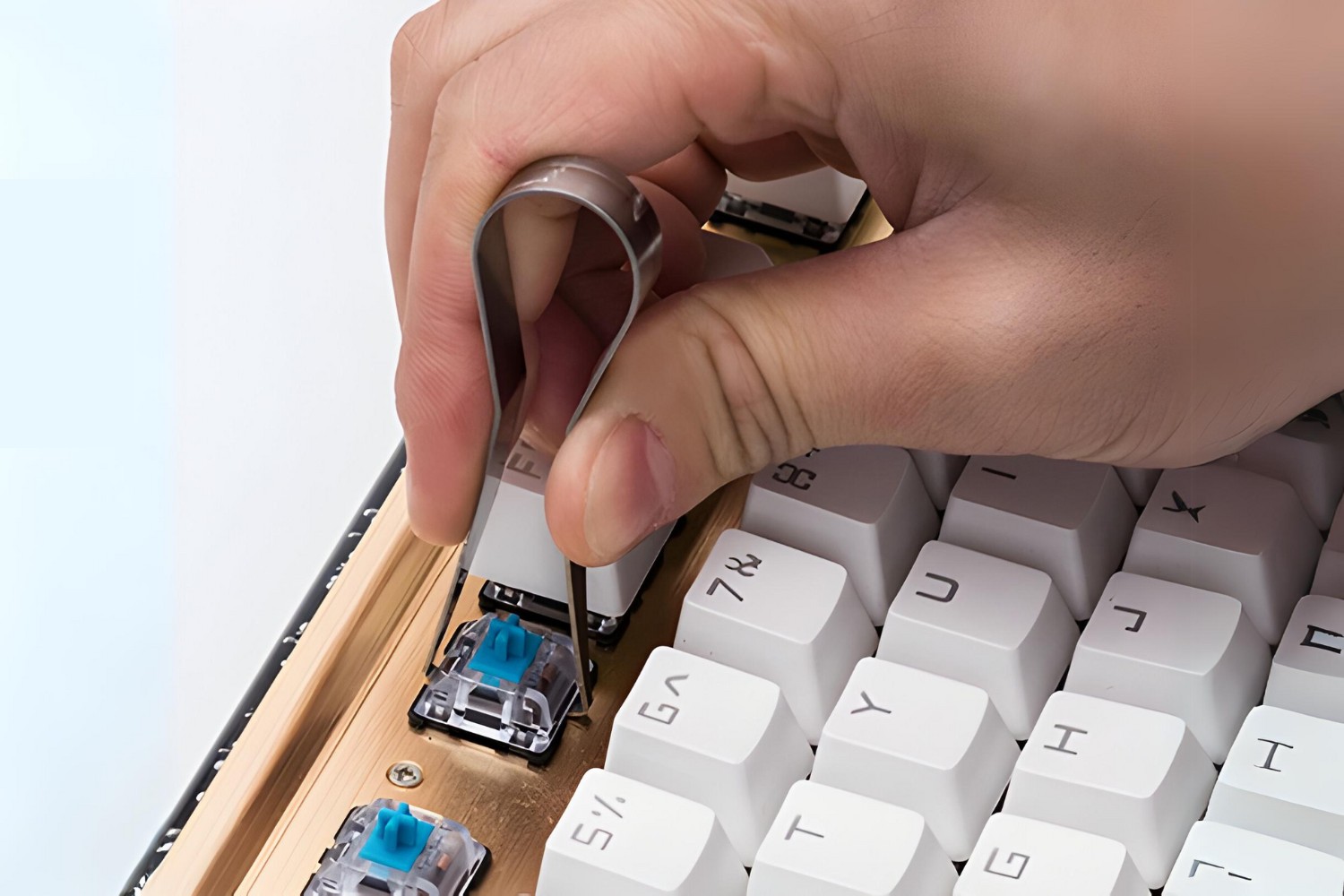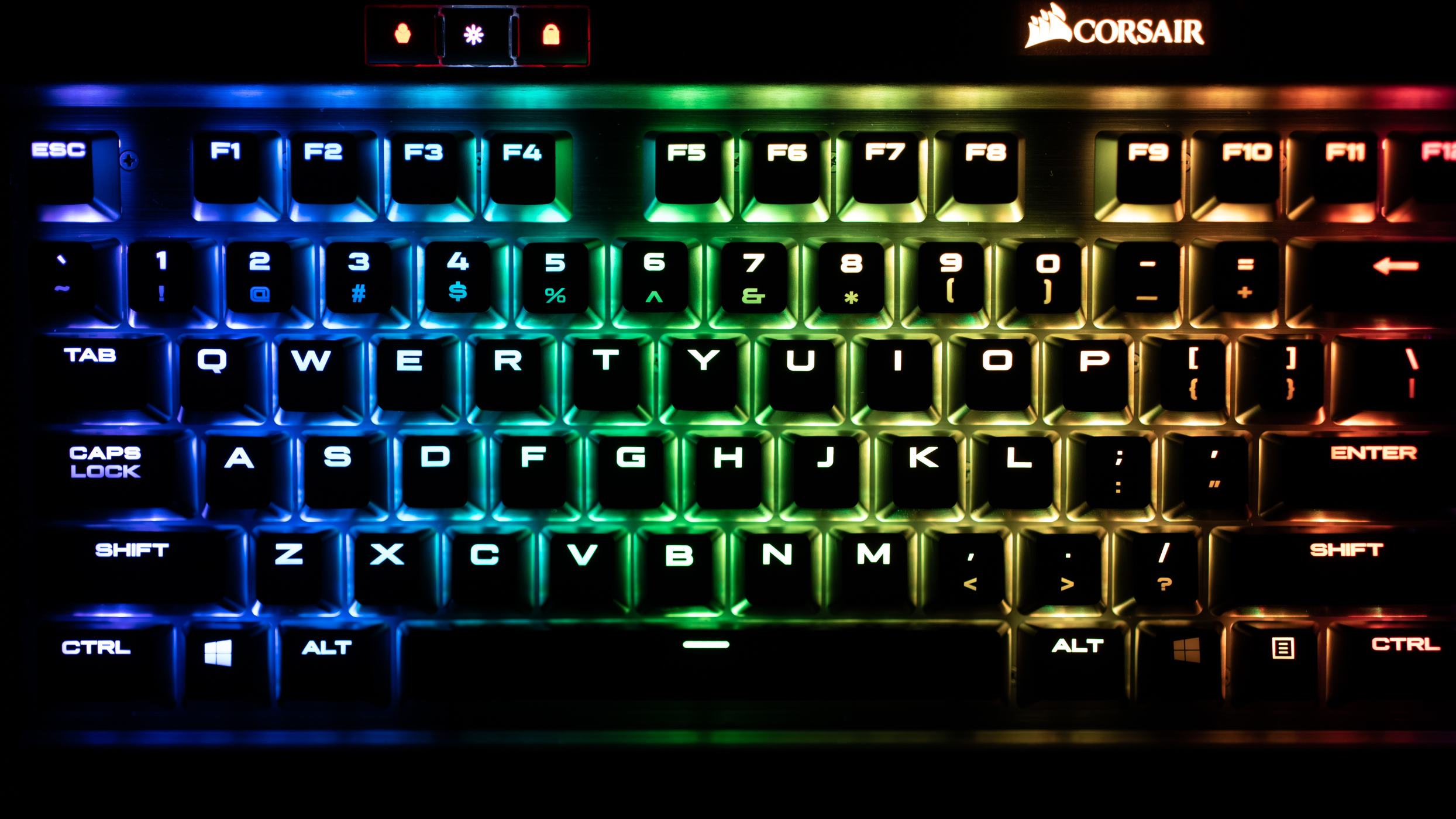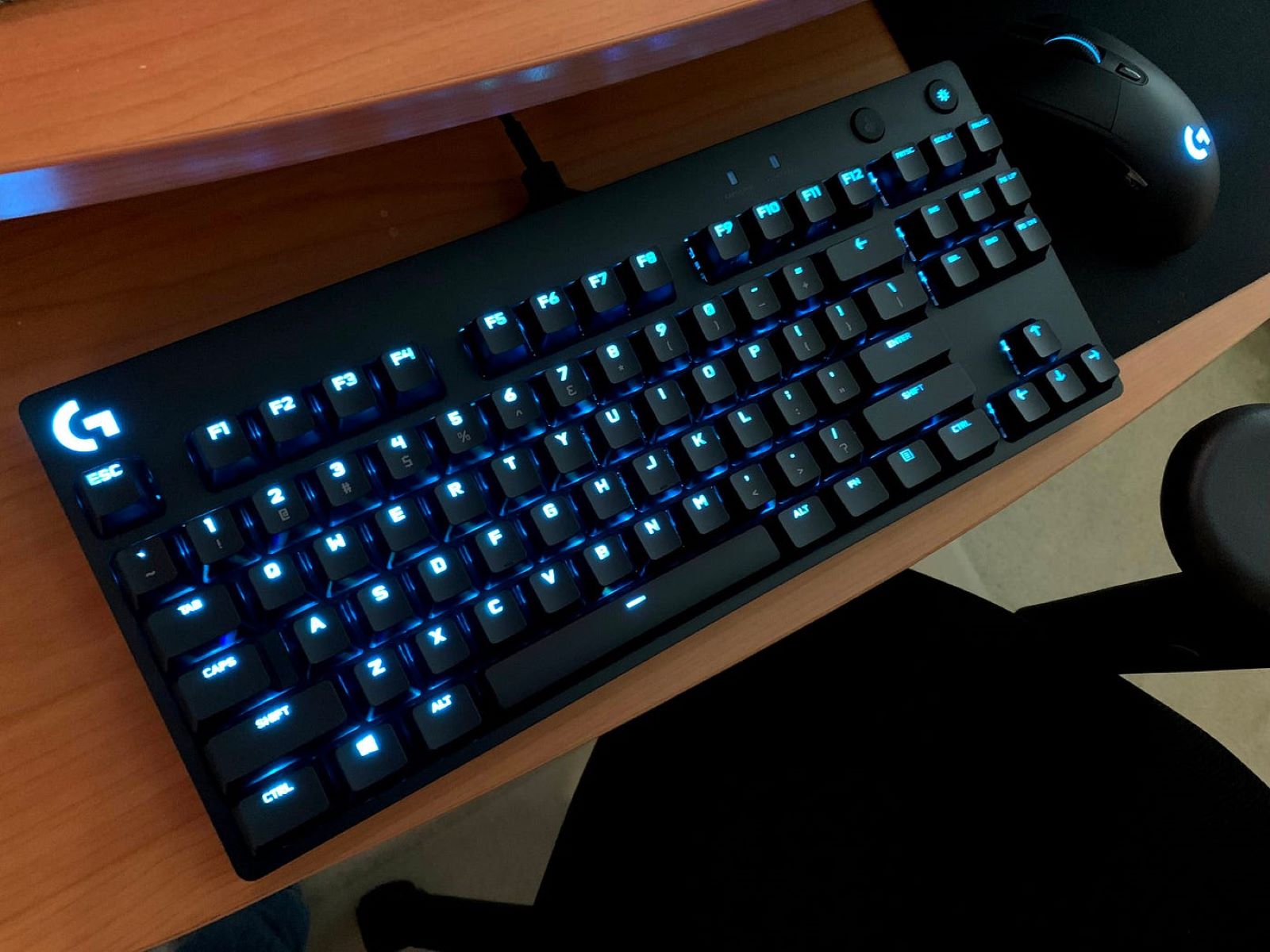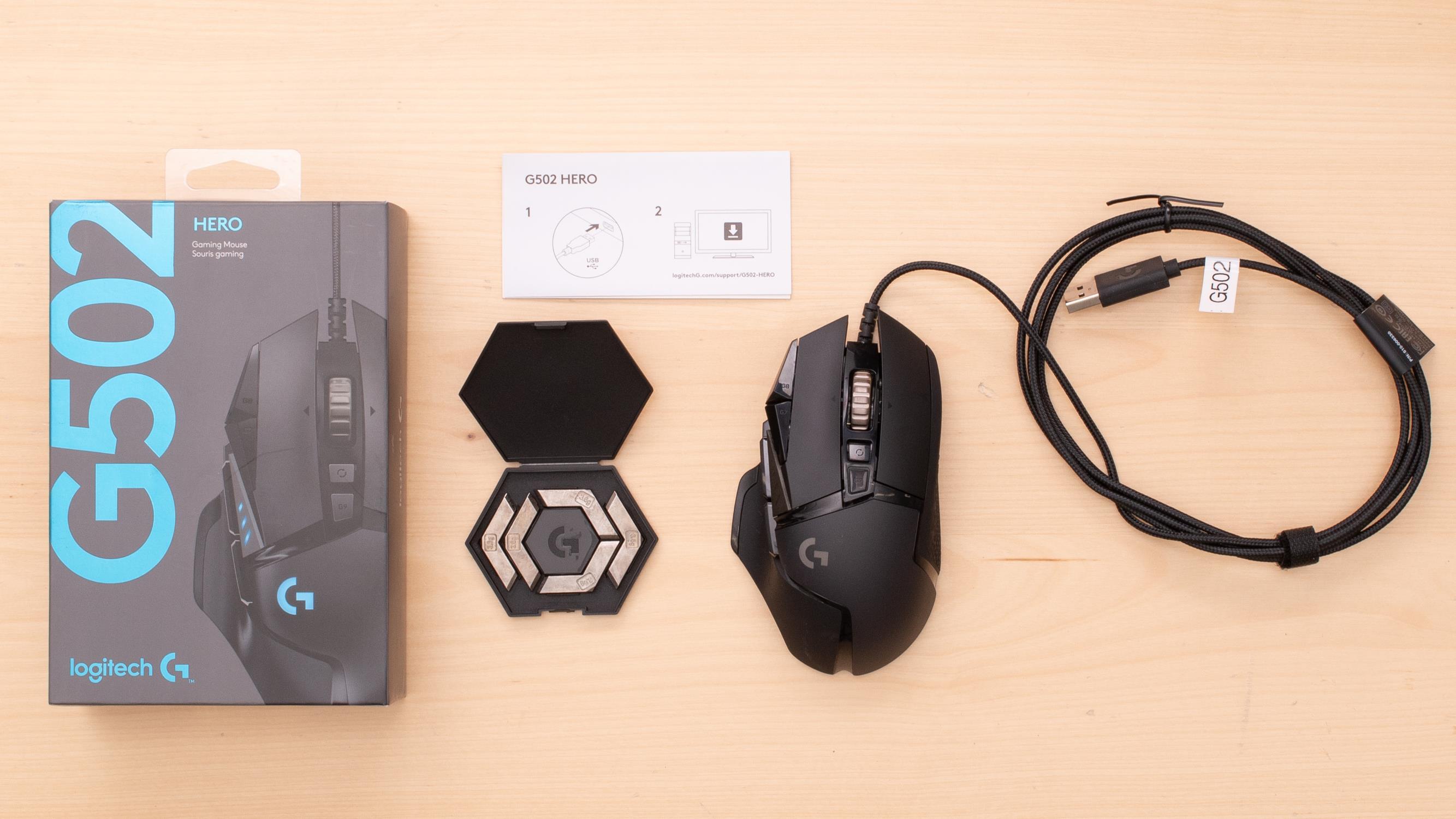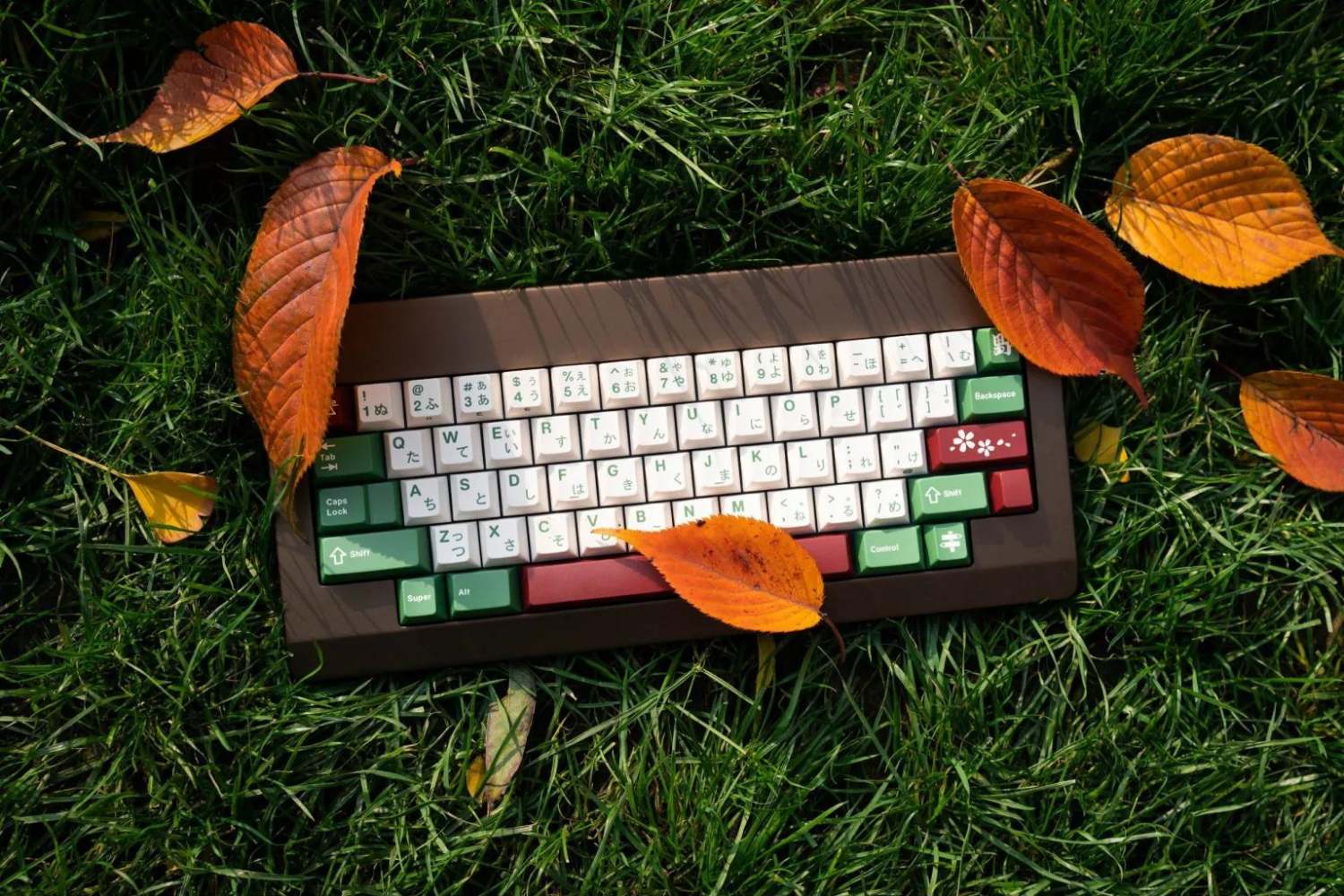**
The Evolution of Typing: A Journey into the World of Keyboards
**
Welcome to the captivating world of keyboards, where the tactile experience of typing has undergone a remarkable evolution. From the clunky, membrane-based keyboards of yesteryears to the modern, sleek mechanical keyboards, the act of typing has transformed into a sensory journey that engages not only our fingers but also our auditory senses. In this exploration, we will delve into the distinct sensations offered by mechanical keyboards and compare them to the familiar feel of old, membrane-based keyboards.
As we embark on this journey, it's essential to recognize that the keyboard is more than just an input device; it's a conduit through which our thoughts and ideas flow into the digital realm. The tactile feedback and auditory cues provided by different types of keyboards play a crucial role in shaping our typing experience, influencing everything from the speed of our keystrokes to the overall satisfaction derived from each press of a key.
Join us as we unravel the intricate nuances of typing on mechanical keyboards and reminisce about the nostalgic feel of old keyboards, shedding light on the key switches, tactility, and overall typing experience that define these two distinct eras of keyboard technology. Let's embark on this sensory journey and discover what sets the mechanical keyboard apart from its predecessors, and how its unique characteristics contribute to an unparalleled typing experience.
The Tactile Symphony of Mechanical Keyboards
Typing on a mechanical keyboard is akin to orchestrating a symphony with your fingertips. The sensation is distinct, characterized by a harmonious blend of tactile feedback, audible clicks, and a satisfying actuation force that resonates through each keystroke.
1. Tactile Feedback
One of the defining features of a mechanical keyboard is its tactile feedback, which provides a pronounced sensation with every key press. The tactile feedback is attributed to the key switch mechanism, which offers a noticeable bump or click as the key is actuated, providing a reassuring confirmation of input.
2. Auditory Delight
Accompanying the tactile feedback is the delightful sound produced by mechanical keyboards. The audible click or clack of the keys adds an auditory dimension to the typing experience, creating a symphony of sound with each keystroke. This auditory feedback not only enhances the overall typing experience but also serves as a satisfying cue for typists, signaling the actuation of each key.
3. Actuation Force and Key Travel
Another aspect that sets mechanical keyboards apart is the actuation force and key travel distance. The actuation force, or the amount of pressure required to register a keystroke, varies across different types of key switches, allowing users to choose a keyboard that aligns with their preferred typing experience. Additionally, the key travel distance, or the vertical distance a key travels upon pressing, contributes to the overall tactile feel, offering a responsive and precise typing experience.
4. Customization and Personalization
Furthermore, the world of mechanical keyboards offers a myriad of customization options, allowing enthusiasts to tailor their typing experience to suit their preferences. From different key switch types, such as linear, tactile, and clicky switches, to customizable keycaps and adjustable actuation points, the realm of mechanical keyboards empowers users to curate a typing experience that is uniquely their own.
Embracing the tactile symphony of a mechanical keyboard elevates the act of typing into a multi-sensory experience, where each keystroke is imbued with a palpable sensation and an audible melody, transforming the mundane task of typing into a captivating performance.
Nostalgia Unveiled: The Familiar Feel of Old Keyboards
Before the era of mechanical keyboards, the landscape of typing was dominated by the familiar, membrane-based keyboards that offered a distinct tactile experience of their own. Typing on old keyboards evokes a sense of nostalgia, reminiscent of the soft, cushioned keystrokes and the subtle, muted feedback that characterized the typing experience of yesteryears.
1. Membrane Key Switches
Old keyboards typically feature membrane key switches, which rely on a pressure pad and membrane layers to register key presses. The tactile feedback on these keyboards is subtle, with a soft, cushioned feel that lacks the pronounced tactile bump found in mechanical switches. The actuation force is uniform across the keys, offering a consistent but less tactile typing experience compared to mechanical keyboards.
2. Muted Keystroke Sound
Unlike the audible clicks of mechanical keyboards, typing on old keyboards produces a muted keystroke sound, characterized by a soft thud or a gentle tap. The absence of audible feedback contributes to a quieter typing experience, making old keyboards suitable for environments where noise reduction is a priority.
3. Uniform Key Feel
Old keyboards are known for their uniform key feel, where each key press offers a consistent level of resistance and feedback. While the tactile sensation may be less pronounced compared to mechanical keyboards, the uniformity of the typing experience contributes to a familiar and predictable feel that typists have grown accustomed to over the years.
4. Reliability and Longevity
Despite the differences in tactile feedback, old keyboards are celebrated for their reliability and longevity. The membrane key switches are resilient and can withstand extensive use, making them a durable choice for users seeking a dependable typing companion that stands the test of time.
Embracing the familiar feel of old keyboards is a nostalgic journey that harkens back to the roots of typing technology. The soft, cushioned keystrokes and the muted feedback offer a sense of comfort and familiarity, making old keyboards a cherished relic in the ever-evolving realm of keyboard technology.
Unveiling the Heart of Typing: Key Switches and Tactility
At the core of the typing experience lies the pivotal role of key switches, which dictate the tactile feedback, actuation force, and overall feel of a keyboard. Understanding the nuances of key switches and their impact on tactility is essential in discerning the distinct typing experiences offered by mechanical keyboards and old keyboards.
1. Mechanical Key Switches
Mechanical keyboards employ a diverse array of key switches, each offering a unique tactile profile. From the linear switches, which provide a smooth and consistent keystroke without tactile feedback, to the tactile switches, featuring a discernible bump upon actuation, and the clicky switches, known for their audible click and tactile bump, the realm of mechanical key switches caters to a spectrum of typing preferences. The tactility of each switch type is defined by the presence and intensity of the tactile bump, offering typists a customizable typing experience that aligns with their desired level of feedback and resistance.
2. Membrane Key Switches
In contrast, old keyboards predominantly feature membrane key switches, characterized by a uniform resistance and a subtle tactile feel. The absence of a distinct tactile bump in membrane switches results in a softer, less pronounced typing experience, where the actuation force is consistent across all keys. While membrane switches may lack the customizable tactility of mechanical switches, they offer a familiar and predictable typing feel that resonates with users who appreciate a gentler key response.
3. Tactility and Typing Experience
The tactility of key switches plays a pivotal role in shaping the overall typing experience. For enthusiasts seeking a heightened sense of tactile feedback and auditory delight, mechanical key switches, particularly the tactile and clicky variants, offer a gratifying typing experience that engages the senses. The pronounced tactile bump and audible click contribute to a responsive and dynamic typing feel, enhancing the act of typing into a sensory symphony.
4. Personalization and Preference
Key switch tactility extends beyond mere functionality, transcending into a realm of personalization and preference. Enthusiasts and typists have the liberty to select a keyboard with key switches that align with their typing style, whether it be a preference for a gentle, uniform keystroke offered by membrane switches or a desire for a more tactile and responsive typing experience facilitated by the diverse array of mechanical key switches.
Understanding the intricacies of key switches and their impact on tactility unveils the heart of typing, allowing users to navigate the diverse landscape of keyboards with a discerning eye for the tactile nuances that define their typing journey.
Immersive Typing: Experience and Feedback
The act of typing transcends the mere physicality of pressing keys; it encompasses a holistic sensory experience that intertwines tactile feedback, auditory cues, and overall satisfaction derived from each keystroke. The typing experience and feedback offered by mechanical keyboards and old keyboards are distinct, each contributing to a nuanced journey of immersive typing.
1. Mechanical Keyboards: Immersive Tactility
Typing on a mechanical keyboard is an immersive experience that engages the senses. The pronounced tactile feedback, characterized by a discernible bump or click with each key press, offers a responsive and dynamic typing feel. This heightened tactility, coupled with the audible click or clack, creates a multi-sensory journey that transforms typing into a symphony of touch and sound, enhancing the overall typing experience.
2. Old Keyboards: Familiar Comfort
In contrast, old keyboards offer a familiar comfort rooted in a gentler tactile feedback and muted keystroke sound. The soft, cushioned keystrokes and uniform resistance contribute to a predictable and comforting typing experience, resonating with users who appreciate a subtle and consistent key response. While the tactile feedback may be less pronounced, the familiarity of the typing experience evokes a sense of nostalgia and reliability.
3. Auditory Cues: A Symphony of Sound
Both mechanical keyboards and old keyboards offer distinct auditory cues that enrich the typing experience. The audible click or clack of mechanical keyboards adds a rhythmic dimension to typing, providing a satisfying auditory feedback that complements the tactile sensation. On the other hand, old keyboards produce a muted keystroke sound, contributing to a quieter and more subdued auditory experience that aligns with the understated tactile feedback.
4. Personalized Typing Journey
The typing experience and feedback are deeply personal, influenced by individual preferences and the desired level of sensory engagement. Enthusiasts and typists have the freedom to curate their typing journey, whether it involves embracing the immersive tactility of mechanical keyboards or finding solace in the familiar comfort of old keyboards. The nuanced interplay between tactile feedback, auditory cues, and overall satisfaction shapes a personalized and enriching typing experience.
Immersing oneself in the world of keyboards unveils a sensory journey that extends beyond mere keystrokes, inviting users to embrace the tactile nuances and auditory symphonies that define their unique typing experience.
The Harmonious Dichotomy of Typing: A Journey Through Tactile Realms
Embarking on a sensory journey through the tactile realms of mechanical keyboards and old keyboards unveils a harmonious dichotomy, where the art of typing transcends the physical act of pressing keys and evolves into a multi-sensory experience that engages the fingertips and resonates with auditory delight. The distinct tactile feedback, actuation force, and overall typing experience offered by these two keyboard archetypes underscore the nuanced interplay between tradition and innovation, familiarity and novelty.
1. Embracing Tactile Nuances
The tactile symphony of mechanical keyboards, characterized by pronounced tactile feedback, audible clicks, and customizable key switches, offers an immersive and dynamic typing experience that captivates the senses. Each keystroke becomes a palpable sensation, accompanied by an auditory melody that transforms typing into a performance.
2. Nostalgia and Comfort
Conversely, old keyboards evoke nostalgia and comfort, rooted in the familiar feel of membrane switches and muted keystroke sounds. The subtle tactile feedback and uniform key resistance create a soothing and predictable typing experience that resonates with users seeking a sense of reliability and tradition.
3. Personalized Typing Journey
The realm of keyboards extends an invitation for users to embark on a personalized typing journey, where individual preferences and sensory engagement converge to shape a unique and enriching experience. Whether it involves immersing in the tactile symphony of mechanical keyboards or finding solace in the familiar comfort of old keyboards, the art of typing becomes a reflection of personal preference and tactile inclination.
4. A Symphony of Touch and Sound
Ultimately, the journey through tactile realms unravels a symphony of touch and sound, where each keystroke becomes a sensory note in the composition of typing. The interplay between tactile feedback, auditory cues, and overall satisfaction contributes to a holistic typing experience that transcends the boundaries of mere input and emerges as a captivating sensory performance.
Embracing the dichotomy of tactile realms in the world of keyboards invites users to celebrate the art of typing as a multi-sensory journey, where tradition and innovation harmonize to shape a nuanced and immersive experience that resonates with the fingertips and captivates the auditory senses.







